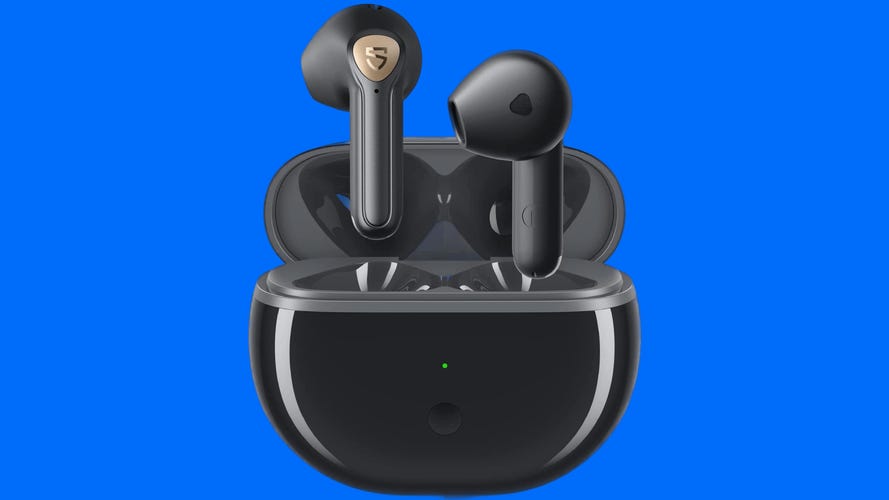Discover Pandipedia
Pandipedia is the world's first encyclopaedia of machine generated content approved by humans. You can contribute by simply searching and clicking/tapping on "Add To Pandipedia" in the answer you like. Learn More
Expand the world's knowledge as you search and help others. Go you!
The Atlantic
Esteemed publication known for long-form journalism and in-depth analysis on politics, culture, science, and technology[1].
Foreign Affairs
Leading magazine analyzing foreign policy, geopolitics, and international affairs with a focus on deep reporting[1].
Foreign Policy
News publication focused on global affairs, current events, and domestic and foreign policy[1].
The Nation
Progressive magazine providing commentary on politics and culture, committed to hard-hitting journalism[1].
Mother Jones
Investigative magazine focused on social issues and current topics, known for well-researched articles[1].
The New York Times Magazine
Features long, immersive editorial pieces and interviews on a variety of topics[1].
The New Yorker
Weekly magazine covering politics, culture, humor, and arts, along with fiction and poetry[1].
Reader’s Digest
Provides trusted insights and stories across various life aspects, known for its extensive readership[2].
The Spectator
An influential weekly magazine delivering clarity and independent opinion on political and cultural issues in the UK[3].
The New Statesman
Progressive publication tackling a wide range of topics and celebrated for its liberal politics[4].
Private Eye
Best-selling UK current affairs magazine known for its humorous take on news and investigative journalism[4].
New Scientist
Magazine focusing on current developments in science, providing engaging features and insights[7].
The Diplomat
Covers international relations and security issues, particularly in the Indo-Pacific region[10].
The Critic
Monthly magazine focused on politics, art, and literature, offering independent criticism and debate[2].
The Week Junior
Current affairs magazine aimed at children, offering educational content in an engaging format[2].
The Atlantic
Known for intellectual depth, covering a wide range of topics relevant to modern society[11].
Let's look at alternatives:
- Modify the query.
- Start a new thread.
- Remove sources (if manually added).
- Request a manual search from our human research team.

Simple DIY home repairs include fixing a leaky faucet, which often involves replacing a worn washer after shutting off the water supply[4]. Cleaning clogged drains, such as those in sinks or showers, can be done by using a drain snake or hot water to dislodge blockages[4].
Other manageable tasks include patching small holes in drywall with spackling paste, painting walls, and replacing light fixtures by connecting wires safely after turning off the power[4][5]. Additionally, homeowners can apply weatherstripping around doors and windows to reduce drafts and improve energy efficiency[1]. These repairs can help maintain your home without professional assistance.
Let's look at alternatives:
- Modify the query.
- Start a new thread.
- Remove sources (if manually added).
- Request a manual search from our human research team.
Get more accurate answers with Super Search, upload files, personalised discovery feed, save searches and contribute to the PandiPedia.
Let's look at alternatives:
- Modify the query.
- Start a new thread.
- Remove sources (if manually added).
- Request a manual search from our human research team.

Sony WF-1000XM5
These earbuds are praised for their incredible noise cancellation, brilliant sound quality, and comfortable fit, making them the best overall earbuds in 2024[4][11][12].
:max_bytes(150000):strip_icc()/apple-airpods-pro-a4b716be9eb84344b0a051172d2ff8b4.jpg)
Apple AirPods Pro 2
Known for their seamless integration with Apple devices, exceptional noise cancellation, and improved sound quality, they are particularly recommended for iPhone users[4][11][12].

Bose QuietComfort Ultra Earbuds
Recognized for the best noise-canceling performance, these earbuds balance excellent audio quality with user comfort[11][12].

Jabra Elite 10 Gen 2
These earbuds provide strong active noise cancellation and a comfortable fit, and they support spatial audio for an immersive listening experience[12].

Sennheiser Momentum True Wireless 4
Offering outstanding sound quality and effective noise cancellation, these earbuds are a strong competitor in the premium segment[4][11].

Technics EAH-AZ80
Blessed with excellent sound quality and robust features, these earbuds are ideal for those who prioritize mic performance and versatility in connectivity[12].

Samsung Galaxy Buds2 Pro
Excellent for Samsung users, these earbuds boast high-resolution audio streaming and improved noise cancellation, alongside strong sound quality[11][12].

Nothing Ear (a)
Affordable yet high-performing, these earbuds deliver good sound quality and decent noise cancellation, making them a top pick under $100[12].

Beats Fit Pro
Known for their secure fit, stellar sound, and effective noise cancellation, these earbuds are recommended for exercise enthusiasts[12].

Anker Soundcore Space A40
Recognized as an excellent budget option, these earbuds provide impressive sound and noise cancellation capabilities for under $100[8][12].
-Offwhite-Background-SOURCE-Bowers-&-Wilkins.jpg)
Bowers & Wilkins Pi8
Premium earbuds offering unmatched sound quality and comfortable fit, plus a unique Bluetooth retransmission feature[12].

JBL Tour Pro 3
Stand out for their innovative smart charging case with a touchscreen, providing easy access to features while delivering good sound quality[12].
Sony WF-C500
Great value budget earbuds that offer clear and lively sound, though they lack some higher-end features like active noise cancellation[4][11].
Cambridge Audio Melomania M100
These mid-range earbuds deliver exceptional audio performance and support various high-resolution codecs, making them a solid choice[12].

EarFun Air Pro 4
Known for their effective noise cancellation and solid battery life, these earbuds offer great features at an affordable price point[12].

Google Pixel Buds Pro 2
Designed for use with Google devices, these earbuds deliver solid sound and noise cancellation, alongside good connectivity options[11][12].
Jabra Elite 8 Active
Sturdy and ideal for workouts, these earbuds feature enhanced noise cancellation and durability, making them suitable for active users[12].

Soundpeats Air3 Deluxe HS
Budget-friendly open earbuds that offer good sound quality and features for the price, ideal for those looking for inexpensive options[12].
JBL Live Free 2
These earbuds impress with good sound quality, effective noise cancellation, and user-friendly features, suitable for everyday use[12].
Sennheiser CX Plus
They deliver a balanced sound profile with budget-friendly pricing, suitable for listeners seeking good overall performance[12].

Sony LinkBuds S
Combining comfort with a compact design, these earbuds provide decent sound quality and effective noise isolation[12].
Master & Dynamic MW09
Premium earbuds with great sound quality and comfortable fit, but they are relatively expensive[12].
Raycon Everyday Earbuds
Affordable earbuds that provide decent performance for calls and entertainment, although they lack ANC[12].
Skullcandy Dime 3
Budget earbuds that offer good sound for the price, though they lack advanced features like ANC[12].
Back Bay Tempo 30
Affordable workout earbuds with great battery life and solid performance, designed for fitness enthusiasts[12].
Bang & Olufsen Beoplay EX
High-end earbuds with impressive sound quality but carry a hefty price tag[11][12].

Bose Ultra Open Earbuds
Unique open-ear design providing excellent environmental awareness, though they do not provide the deepest bass[12].

Anker Soundcore Liberty 4 NC
Affordable earbuds that deliver solid ANC and sound quality, making them great for everyday use[12].
Let's look at alternatives:
- Modify the query.
- Start a new thread.
- Remove sources (if manually added).
- Request a manual search from our human research team.
Introduction to Large Language Models
Large Language Models (LLMs) have revolutionized the landscape of natural language processing (NLP), enabling diverse applications that extend beyond mere text generation. Pretraining on vast amounts of web-scale data has provided these models with a foundational understanding. Researchers are increasingly focusing on post-training techniques to refine LLMs, improve accuracy, and align responses more closely with human expectations. Post-training consists of methodologies such as fine-tuning, reinforcement learning, and test-time scaling, all aimed at enhancing the overall performance of LLMs in real-world settings[1].
Categories of Post-training Techniques
Post-training techniques can be categorized broadly into three main strategies: Fine-tuning, Reinforcement Learning (RL), and Test-Time Strategies. Fine-tuning adjusts LLMs to specific tasks using supervised learning on labeled datasets, significantly enhancing performance while maintaining lower computational costs. Moreover, reinforcement learning enables LLMs to learn from interaction with their environment, improving adaptability and decision-making capabilities. Test-time strategies focus on optimizing the inference process, further refining model performance through techniques such as dynamic adjustment of computational resources[1].
The Role of Reinforcement Learning

Reinforcement Learning (RL) is pivotal in advancing LLMs as it encourages them to adapt through feedback from their outputs. Methods like Reinforcement Learning from Human Feedback (RLHF) leverage human annotations to guide model updates and improve alignment with user intentions. This approach helps minimize issues of reliability and ethical considerations, making LLMs more robust in generating competent and contextually appropriate responses[1].
Fine-tuning for Enhanced Accuracy
Fine-tuning LLMs involves adapting them to specific datasets and objectives to improve their performance. This stage incorporates supervised instruction using high-quality, human-annotated examples to ensure the models better align with user expectations and reduce biases. This process yields more accurate and contextually relevant outputs, as fine-tuning allows LLMs to shift focus and prioritize relevant features of input data[1].
Challenges in Post-training Strategies
Despite the substantial advances, researchers face challenges such as catastrophic forgetting during fine-tuning. This occurs when models lose previously learned capabilities upon updating with new data. Additionally, ensuring LLMs maintain their reasoning capabilities while adapting to new tasks is critical. Finding a balance between generalization and specialization remains an area of active research aimed at improving LLM versatility[1].
Dynamic Test-Time Strategies
Test-Time Scaling (TTS) has emerged as a formidable strategy in optimizing LLM performance during inference. By dynamically allocating computational resources based on the complexity of a given query, TTS allows models to allocate more processing power to challenging tasks while conserving resources for simpler inquiries. Techniques like Beam Search and Chain-of-Thought prompting further enhance the reasoning capabilities of LLMs, enabling them to process complex queries more effectively. These strategies have shown promising results, improving model performance on nuanced tasks significantly[1].
Applications of Advanced LLM Techniques
Recent studies highlight the use of advanced LLM techniques in various domains such as healthcare, finance, and education. LLMs can assist in automating document processing, summarizing vast amounts of information, and even aiding in medical diagnostics. As these models become more refined through post-training techniques, their capacity to handle domain-specific language tasks will continue to expand, making them invaluable tools in various sectors[1].
Future Directions for LLM Research
Looking ahead, the future of LLM research appears promising with the potential for further refinement through techniques like continual learning and improved reward modeling. Adaptation strategies that focus on privacy and personal user experiences are becoming increasingly critical as data security and ethical considerations drive model development. Enhanced collaboration between LLMs and human feedback mechanisms may lead to more effective solutions in interactive applications, allowing for a more tailored user experience[1].
Conclusion

In conclusion, Large Language Models are fundamentally transforming how we interact with technology. As research advances in fine-tuning, reinforcement learning, and dynamic test-time strategies, LLMs are poised to achieve even greater levels of accuracy, adaptability, and efficiency in their various applications. The ongoing challenges present exciting opportunities for innovation aimed at enhancing these models' capabilities in real-world settings, ultimately leading to more beneficial human-computer interactions[1].
Let's look at alternatives:
- Modify the query.
- Start a new thread.
- Remove sources (if manually added).
- Request a manual search from our human research team.

The potential for AI and robotics to free humanity from menial repetitive work and to dramatically increase the production of goods and services could presage an era of peace and plenty.
Unknown[1]
The capacity to accelerate scientific research could result in cures for disease and solutions for climate change and resource shortages.
Unknown[1]

Some of these are already apparent, while others seem likely based on current trends including lethal autonomous weapons…surveillance and persuasion…biased decision making…
Unknown[1]
Success in creating AI could be the biggest event in the history of our civilization. But it could also be the last –unless we learn how to avoid the risks.
Stephen Hawking[1]
Long before we have an opportunity to ‘solve AI,’ however, we will incur risks from the misuse of AI, inadvertent or otherwise.
Unknown[1]
Let's look at alternatives:
- Modify the query.
- Start a new thread.
- Remove sources (if manually added).
- Request a manual search from our human research team.
Get more accurate answers with Super Search, upload files, personalised discovery feed, save searches and contribute to the PandiPedia.
According to the trial evidence, Google violated Section 2 of the Sherman Act in maintaining its monopoly power in search advertising, and the DOJ seeks assistance from the Court to end Google's monopoly power over search ads (343/1-5).
The contracts have created the environment, the ecosystem, whereby there's no meaningful competition for search ads, and the prices are the harm that is being caused to advertisers (344/15-18). The Sherman Act requires Congress to have competition be enforced, not by a single firm trying to decide where they think prices should be (473/20-24).
Let's look at alternatives:
- Modify the query.
- Start a new thread.
- Remove sources (if manually added).
- Request a manual search from our human research team.

Farfetch is a British-Portuguese online luxury fashion retail platform that connects consumers with over 700 boutiques and brands worldwide, enabling them to purchase luxury goods from a single marketplace. Founded in 2007 by José Neves, the platform offers a diverse range of products, including women's and men's fashion, accessories, and beauty items, from more than 3,400 brands and 1,400 luxury sellers globally[4][5].
The company's business model is centered around a marketplace approach, meaning it does not hold inventory itself but instead takes a commission on sales made through its platform. This allows for a broad selection of products while maintaining low overhead costs[5]. Farfetch is also focused on providing a seamless shopping experience, integrating digital and physical retail through its advanced technology platform[4].
Additionally, Farfetch plays a key role in the luxury fashion ecosystem by offering tools for both luxury brands and smaller emerging designers, helping them reach a global audience without the need for extensive physical retail operations[4][5]. The platform is operational in over 190 countries, emphasizing high-quality customer service and a rigorous verification process for its boutique partners to ensure product authenticity[5].
Let's look at alternatives:
- Modify the query.
- Start a new thread.
- Remove sources (if manually added).
- Request a manual search from our human research team.

Apple vol afegir lents òptiques als AirPods per integrar funcionalitats innovadores com la 'Intel·ligència Visual'. Aquesta tecnologia permet als auriculars reconèixer l'entorn físic de l'usuari i proporcionar informació rellevant en temps real, similar al que ja s'està implementant en els iPhones[1][2][5]. Les càmeres podrien, per exemple, ajudar a fer reconeixement d'objectes i permetre que els usuaris obtinguin dades sobre el seu entorn sense necessitat de treure el telèfon[4][6].
A més, la integració de càmeres als AirPods podria millorar l'experiència d'ús en combinar-se amb dispositius com les Apple Vision Pro, ajustant el so segons la direcció en què l'usuari mirés[3][5]. Així, Apple busca posicionar-se com a líder en tecnologia intel·ligent i realitat augmentada[2][4].
Let's look at alternatives:
- Modify the query.
- Start a new thread.
- Remove sources (if manually added).
- Request a manual search from our human research team.

Reasoning collapse in Large Reasoning Models (LRMs) is triggered by their failure to develop generalizable problem-solving capabilities beyond certain complexity thresholds. The empirical investigation shows that accuracy progressively declines as problem complexity increases until reaching complete collapse, where performance drops to zero beyond a model-specific threshold[1].
Additionally, there is a counterintuitive reduction in reasoning effort, measured by inference tokens, as models approach this critical complexity point, despite having sufficient computational resources. This indicates inherent limitations in the reasoning capabilities of LRMs, revealing that they do not effectively leverage additional inference time as problem complexity escalates[1].
Let's look at alternatives:
- Modify the query.
- Start a new thread.
- Remove sources (if manually added).
- Request a manual search from our human research team.




















